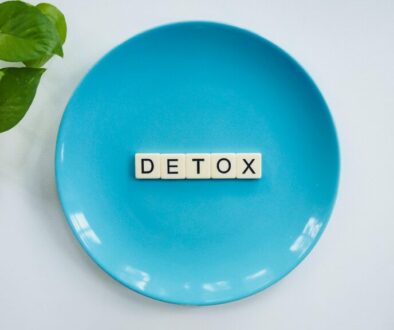How to Create a Balanced Diet for Weight Loss
Introduction
Creating a balanced diet for weight loss is crucial for achieving and maintaining a healthy weight. A balanced diet includes various nutrient-rich foods from different food groups, which provide the essential vitamins, minerals, and energy needed for overall health. By focusing on nutrient-dense foods and maintaining a calorie deficit, you can lose weight effectively while nourishing your body. This comprehensive guide will cover everything you need to know about building a balanced diet for weight loss, planning your meals, practical tips for sustainable weight loss, and additional resources to support you on your journey.
Understanding a Balanced Diet for Weight Loss
What is a Balanced Diet?
A balanced diet for weight loss includes a variety of foods from all food groups in the right proportions to provide the necessary nutrients for good health. It emphasizes the importance of consuming:
- Vegetables: Rich in vitamins, minerals, and fiber.
- Fruits: Packed with essential vitamins and antioxidants.
- Grains: Preferably whole grains for more fiber and nutrients.
- Proteins: Both animal and plant-based sources.
- Dairy or Alternatives: Important for calcium and vitamin D.
A balanced diet supports bodily functions, boosts immunity, and promotes overall well-being. It’s essential for weight loss as it helps maintain muscle mass, provides energy, and supports metabolic processes.
The Five Food Groups
Vegetables
- Types: Leafy greens, root vegetables, cruciferous vegetables.
- Benefits: High in vitamins A, C, K, and minerals like potassium and magnesium.
- Daily Requirements: Aim for at least 3-5 servings per day.
- Tips: Add spinach to smoothies, snack on carrot sticks, or include a side salad with meals.
Fruits
- Types: Berries, citrus fruits, tropical fruits, and stone fruits.
- Benefits: Rich in vitamins, fiber, and antioxidants.
- Daily Requirements: Aim for at least 2-4 servings per day.
- Tips: Enjoy fruit as a snack, dessert, or add it to breakfast cereals and salads.
Grains
- Types: Whole grains like brown rice, quinoa, oats, and whole wheat.
- Benefits: Provide energy, fiber, and essential nutrients like B vitamins and iron.
- Daily Requirements: Aim for 3-6 servings per day.
- Tips: Replace white rice with brown rice, choose whole grain bread, and opt for oatmeal over sugary cereals.
Proteins
- Types: Lean meats, fish, beans, lentils, tofu, and eggs.
- Benefits: Essential for muscle repair, enzyme function, and immune health.
- Daily Requirements: Aim for 2-3 servings per day.
- Tips: Incorporate a mix of animal and plant-based proteins to diversify nutrient intake.
Dairy and Alternatives
- Types: Milk, cheese, yogurt, and fortified plant-based alternatives like almond milk and soy yogurt.
- Benefits: Important for bone health due to calcium and vitamin D content.
- Daily Requirements: Aim for 2-3 servings per day.
- Tips: Add yogurt to smoothies, use milk in cooking, and snack on cheese with fruit.
Key Components of a Balanced Diet for Weight Loss
Fruit and Vegetables: Are You Getting Your 5 A Day?
Fruits and vegetables are vital components of a balanced diet for weight loss, providing essential nutrients and fiber. The “5 A Day” recommendation suggests consuming at least five portions of fruits and vegetables each day. Here are some ways to ensure you meet this goal:
- Incorporate Fruits and Vegetables into Every Meal: Add berries to your breakfast, include a side salad with lunch, and have steamed vegetables with dinner.
- Snack Smart: Keep cut-up fruits and vegetables like apple slices, carrot sticks, and bell pepper strips handy for quick, healthy snacks.
- Experiment with Recipes: Try new recipes that include a variety of vegetables and fruits, such as vegetable stir-fries, fruit salads, and smoothies.
Starchy Foods in Your Diet
Starchy foods are an important source of energy and should be included in a balanced diet for weight loss. They provide carbohydrates, which are the body’s primary energy source, as well as fiber, vitamins, and minerals.
- Best Choices: Whole grains like brown rice, quinoa, whole wheat pasta, and sweet potatoes.
- Portion Sizes: Aim to fill about one-third of your plate with starchy foods. Choose whole grain options to increase fiber intake.
- Tips for Incorporation: Use whole wheat bread for sandwiches, choose oatmeal for breakfast, and substitute white rice with brown rice in meals.
Milk and Dairy Foods (and Alternatives)
Dairy products are rich in calcium, vitamin D, and protein, all of which are important for bone health and overall nutrition. For those who are lactose intolerant or follow a vegan diet, there are plenty of alternatives available.
- Dairy Options: Milk, cheese, yogurt, and kefir.
- Non-Dairy Alternatives: Almond milk, soy milk, coconut milk, and fortified plant-based yogurts.
- Tips for Inclusion: Add milk to smoothies, use yogurt in dressings, and choose cheese as a protein-rich snack.
Beans, Pulses, Fish, Eggs, Meat, and Other Proteins
Proteins are crucial for muscle repair, enzyme production, and overall body function. Including a variety of protein sources in your diet ensures you get a wide range of nutrients.
- Animal-Based Proteins: Chicken, turkey, fish, lean cuts of beef and pork, and eggs.
- Plant-Based Proteins: Beans, lentils, chickpeas, tofu, and tempeh.
- Tips for Incorporation: Add beans to salads and soups, grill or bake fish for dinner, and enjoy eggs in various ways for breakfast.
Oils and Spreads
Healthy fats are an essential part of a balanced diet for weight loss, supporting brain health, hormone production, and nutrient absorption. Opt for unsaturated fats and limit saturated and trans fats.
- Healthy Fat Sources: Olive oil, avocado oil, nuts, seeds, and fatty fish like salmon.
- Tips for Use: Use olive oil for cooking and salad dressings, snack on a handful of nuts, and include avocado in sandwiches and salads.
Eat Less Saturated Fat, Sugar, and Salt
Reducing the intake of saturated fats, added sugars, and salt is important for preventing chronic diseases and maintaining overall health.
- Saturated Fats: Found in fatty cuts of meat, butter, cheese, and processed foods. Choose lean meats, low-fat dairy, and use oils like olive oil instead.
- Added Sugars: Found in sweets, sugary drinks, and many processed foods. Opt for whole fruits for sweetness and check labels for hidden sugars.
- Salt: Excessive salt intake can lead to high blood pressure. Use herbs and spices for flavor, and avoid adding extra salt to meals.
Developing a Diet Plan for Weight Loss
Starting a Weight Loss Program
Starting a weight loss program requires setting realistic and achievable goals. Focus on gradual weight loss, aiming to lose 1-2 pounds per week. This approach is more sustainable and healthier than rapid weight loss.
- Set Clear Goals: Define your weight loss goals and break them down into smaller, manageable steps.
- Track Your Progress: Keep a food diary or use an app to monitor your calorie intake and physical activity.
- Adjust as Needed: Regularly review your progress and make adjustments to your plan if necessary.
Creating a Calorie Deficit in a Nutrient-Dense Way
To lose weight, you need to create a calorie deficit, meaning you consume fewer calories than you burn. It’s important to achieve this deficit without compromising nutrient intake.
- Understand Calorie Needs: Use an online calculator or consult a nutritionist to determine your daily calorie needs.
- Focus on Nutrient-Dense Foods: Choose foods that are high in nutrients but low in calories, such as vegetables, fruits, lean proteins, and whole grains.
- Portion Control: Use smaller plates, measure portion sizes, and be mindful of portion distortion.
Building Nutrient-Dense Meals
Nutrient-dense meals provide maximum nutrients for the least amount of calories. Here’s how to build them:
- Balance Your Plate: Half your plate should be vegetables, a quarter should be lean protein, and a quarter should be whole grains.
- Include Healthy Fats: Add a small amount of healthy fat, such as olive oil, nuts, or avocado.
- Stay Hydrated: Drink water throughout the day to stay hydrated and help control hunger.
Guidelines for Designing Your Diet
Personalize your diet plan based on your lifestyle, preferences, and nutritional needs. Here are some guidelines to help you design your diet:
- Variety and Moderation: Include a wide range of foods to ensure a balanced intake of nutrients. Practice moderation, especially with high-calorie and processed foods.
- Meal Timing: Plan your meals and snacks to maintain steady energy levels throughout the day. Avoid skipping meals as it can lead to overeating later.
- Flexibility: Allow for occasional indulgences. A flexible approach can prevent feelings of deprivation and help you stick to your plan long-term.
Meal Planning for Weight Loss
How to Meal Plan for Weight Loss
Meal planning involves preparing meals in advance to ensure you stay on track with your diet. Here’s how to get started:
- Plan Your Meals: Write out a weekly meal plan, including breakfast, lunch, dinner, and snacks.
- Create a Shopping List: Based on your meal plan, make a list of the ingredients you need.
- Prepare in Advance: Cook and portion out meals for the week to save time and avoid unhealthy choices.
Helpful Tips to Make Meal Planning Work for You
- Pick a Meal Planning Method that Fits Your Routine: Whether it’s batch cooking, preparing individual meals, or a combination, find a method that works for you.
- Consider Trying an App: Meal planning apps can simplify the process by providing recipes, shopping lists, and nutritional information.
- Pick Enough Recipes: Ensure you have a variety of recipes to avoid monotony. Rotate your favorite meals and try new ones regularly.
- Consider Snacks: Healthy snacks can prevent overeating during meals. Include snacks like fruit, nuts, or yogurt in your plan.
- Ensure Variety: Incorporate different foods and recipes to keep your meals interesting and nutritionally balanced.
- Speed Up Your Meal Prep Time: Use time-saving techniques like pre-chopping vegetables, cooking in bulk, and using kitchen gadgets like slow cookers.
- Store and Reheat Your Meals Safely: Proper storage is essential to maintain food quality and safety. Use airtight containers and label them with the date.
Easy Recipe Ideas
To power your nutrition journey, explore a variety of healthy recipes. Websites and apps often offer thousands of recipes that cater to different dietary needs and preferences. Try simple and quick recipes that fit into your schedule, such as:
- Breakfast: Greek yogurt with berries and granola.
- Lunch: Grilled chicken salad with mixed greens and vinaigrette.
- Dinner: Baked salmon with brown rice and asparagus.
- Snack: Apple slices with almond butter.
7-Day Menu
Creating a weekly menu can help you stay organized and ensure you have all the ingredients you need. Here’s a sample 7-day menu:
- Monday: Grilled chicken with quinoa and steamed broccoli.
- Tuesday: Baked salmon with brown rice and asparagus.
- Wednesday: Vegetarian stir-fry with tofu and mixed vegetables.
- Thursday: Turkey meatballs with whole wheat pasta and marinara sauce.
- Friday: Lentil soup with a side salad.
- Saturday: Shrimp tacos with cabbage slaw.
- Sunday: Beef and vegetable stew with a whole grain roll.
Adjust the menu to accommodate any dietary restrictions or preferences.
Practical Tips for Sustainable Weight Loss
Science-Backed Tips to Lose Weight Fast and Sustainably
- Eat Protein, Fat, and Vegetables: Each meal should include protein, healthy fats, and vegetables. This combination helps you feel full and satisfied.
- Move Your Body: Regular physical activity is essential for weight loss and overall health. Find an exercise routine that you enjoy and can stick with.
- Eat More Fiber: High-fiber foods like fruits, vegetables, and whole grains promote satiety and support digestive health.
- Eat Mindfully: Pay attention to hunger and fullness cues. Avoid distractions while eating and take time to enjoy your meals.
- Stay Hydrated: Drinking water throughout the day is crucial for overall health and can help control hunger.
- Get Plenty of Sleep: Adequate sleep is important for weight management and overall well-being.
What About Calories and Portion Control?
Understanding portion sizes and calorie needs is important for weight loss. Here are some tips:
- Use Tools: Use food scales and measuring cups to accurately portion your meals.
- Calorie Counting Apps: These apps can help you track your intake and stay within your daily limits.
- Listen to Your Body: Pay attention to hunger and fullness cues to avoid overeating.
Sample Meal Ideas for Fast Weight Loss
Here are some meal ideas that are low in calories but high in nutrients:
- Breakfast: Greek yogurt with berries and a sprinkle of granola.
- Lunch: Grilled chicken salad with mixed greens and a vinaigrette dressing.
- Dinner: Baked cod with sweet potato wedges and green beans.
- Snack: Apple slices with almond butter.
Additional Support and Resources
Self-Refer for Help with Your Weight
If you’re struggling to lose weight on your own, consider seeking professional help. Nutritionists, dietitians, and weight loss programs can provide personalized guidance and support.
Getting Extra Help
There are numerous resources available online and in-person to help you with weight loss. Join a support group, use online forums, and leverage apps that offer diet and fitness tracking.
Conclusion
Achieving and maintaining a balanced diet for weight loss is a journey that requires planning, commitment, and patience. By focusing on nutrient-dense foods, meal planning, and incorporating healthy habits, you can reach your weight loss goals in a sustainable way. Remember, small changes can lead to significant results over time. Stay motivated and seek support when needed.
FAQs
What is the Fastest Way to Lose Weight?
- The fastest way to lose weight involves creating a calorie deficit through a combination of diet and exercise. However, focus on sustainable methods rather than quick fixes.
How Can I Lose Weight in 7 Days?
- While significant weight loss in a week isn’t recommended for long-term health, you can jumpstart your journey by eating a balanced diet, reducing calorie intake, and increasing physical activity.
How Can I Drop 20 Pounds Fast?
- Rapid weight loss should be approached cautiously. Aim for a balanced diet, regular exercise, and possibly seek professional advice to ensure it’s done healthily.
How Can I Lose 10 Pounds in a Week?
- Losing 10 pounds in a week is extreme and not typically recommended. Focus on gradual, sustainable weight loss through a balanced diet and regular exercise.
How Can I Lose 15 Pounds in 2 Weeks?
- Similar to losing 10 pounds in a week, losing 15 pounds in two weeks is challenging and may not be sustainable. Prioritize healthy eating and consistent exercise for long-term success.





9 August 2024 @ 17:56
Very interesting topic, thank you for putting up.